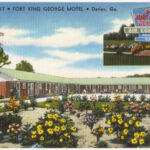Market segmentation is the process used by Business to Consumer (B2C) businesses to divide their target market into smaller groups of consumers with similar needs and characteristics. This strategy allows companies to tailor their marketing efforts to specific segments, improving the relevance of their messaging and increasing the likelihood of conversions.
Market segmentation can be particularly valuable for small businesses by enabling them to compete more effectively with larger firms that have greater resources. Small businesses can also allocate their limited resources more efficiently by focusing on a narrow market segment, building stronger customer relationships, and differentiating themselves from competitors.
Whatever your industry, the chances are your customers will differ in many ways:
- The benefits they are looking for
- The price they are willing to pay
- How they interact with your brand
- The quantities they desire
- Where and when they make a purchase
Types of Market Segmentation
There are four primary types of market segmentation.
Demographic Segmentation
Demographic segmentation is one of the main methods of market segmentation. It involves breaking the market into customer demographics such as age, income, gender, race, education, or occupation. This market segmentation strategy assumes that individuals with similar demographics will have similar needs.
Age is a widely used form of demographic segmentation because consumer needs evolve with age. For example, young consumers tend to be more fashion-conscious, while older consumers tend to recognize the value of supplements and vitamins. Harry Dent produced a series of demand curves that looked at hundreds of products and service categories that consumers buy based on age demographics.
Gender segmentation is also popular because it allows businesses to improve their products and services based on the more specific demands of men or women. For example, women tend to buy cosmetics and skincare products, while men tend to buy tools and electronic components.
Many businesses will also divide their market into consumer groups based on the prospect’s life cycle stage, such as whether they are single, married, have children, or retired. A business can better accommodate a prospect’s needs and desires by segmenting target customers based on their life cycle stage. For example, working people tend to buy computers and smartphones, while retired people tend to buy more travel-related items.
Many businesses will also consider segmenting their markets based on the type of dwelling, such as apartment, condo, or single-family home, as well as the neighborhood in which they live, as a proxy indicator for a prospect’s anticipated behavior. The neighborhood and type of residence where prospects live can provide a general understanding of the kinds of products and brands they like. For example, prospects living in a single-family home in an expensive neighborhood tend to buy landscaping services more than apartment dwellers.
Geographic Segmentation
Geographic segmentation groups prospects based on their physical location, assuming that people in a given geographical area may have similar needs. Factors considered by geographic segmentation are lifestyle and climate. For example, people in northern latitudes tend to buy more coats, while those in southern latitudes tend to buy more swimsuits. Geographic segmentation applies more to large companies expanding into new locations and having to adjust the way they market their products and services based on local traditions and demands.
Behavioral Segmentation
Behavioral segmentation groups consumers based on their previous interaction with markets and products. It relies heavily on market data, consumer actions, and the decision-making patterns of customers. Behavioral segmentation looks at a prospect’s purchasing habits, brand loyalty, product usage, and response to marketing stimuli. It assumes that consumer behavior predicts purchasing decisions better than demographic or psychographic factors; however, spending habits may change over time or in response to global events.
There are four main types of behavioral segmentation:
Buying on occasion – Occasions are one of the most apparent forms of behavioral segmentation, such as holidays, events, festivals, etc.
Buying for benefits – Many products and services are aimed at consumers seeking specific benefits. For example, one shampoo may target someone struggling with dandruff, while another may target someone dealing with split ends.
Consumer loyalty – Growing businesses need to retain existing customers. Market researchers seek the most effective approaches to encourage repeat business.
Consumer usage rates – Usage rates refer to the frequency and quantity of use or consumption of a product or service by consumers. Usage rates are used to target marketing campaigns based on different usage behaviors. For example, heavy users may be targeted with loyalty programs and packaging deals, while less frequent users may be targeted with incentives to increase usage, such as Buy One Get One (BOGO) deals.
Psychographic Segmentation
Psychographic segmentation is the most challenging market segmentation approach. It endeavors to classify consumers according to their lifestyle, personality, opinions, and interests. Psychographic segmentation is more difficult to achieve because traits change frequently and objective data are not always readily available. However, this approach may yield the best market segment results as it groups individuals based on intrinsic motivators instead of external data points.
Typical examples of psychographic information include someone that:
- Is concerned with their appearance
- Tends to prefer quantity over quality
- Is career or family-focused
- Is a socialite, or chooses a smaller, close-knit circle of friends
- Tends to be a brand advocate
A common method of obtaining psychographic information is to interview existing and previous customers. Personal interviews allow you to understand how your customers think, feel, and interact. One-on-one interviews can give incredible details, but tools like SimplyAnalytics and Data Axle’s LifeStyle database can be used for those seeking a larger sample size.
It’s also possible to obtain some psychographic information based on how visitors interact with your website. Website analytics tools allow businesses to understand the calls-to-action and content.
Conclusion
Market segmentation is a marketing strategy that categorizes consumers into different groups based on demographics, geographic location, behaviors, and psychographics. By dividing the market into distinct segments, a small business can tailor its marketing efforts to different groups of consumers with similar needs, preferences, and behaviors. This approach enables companies to develop targeted marketing campaigns, adjust pricing and packaging strategies, and effectively meet the needs of their target audience. Market segmentation is a critical component of market research. It allows a company to better understand its customers and develop strategies that increase customer loyalty and drive revenue growth.
How can you use market segmentation to unlock consumer insight?












